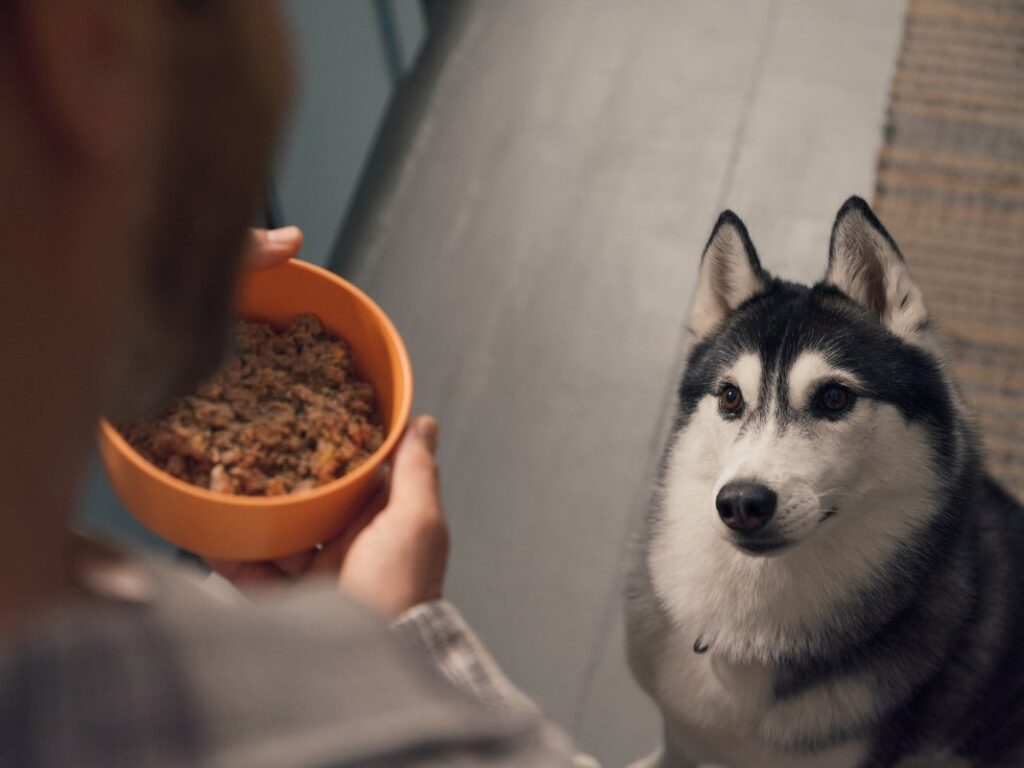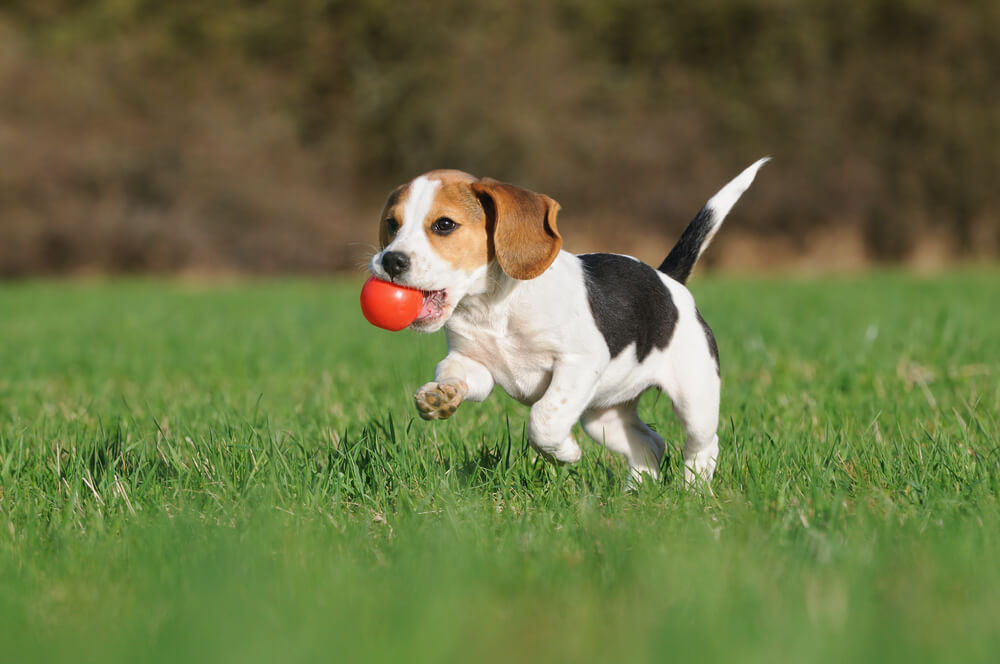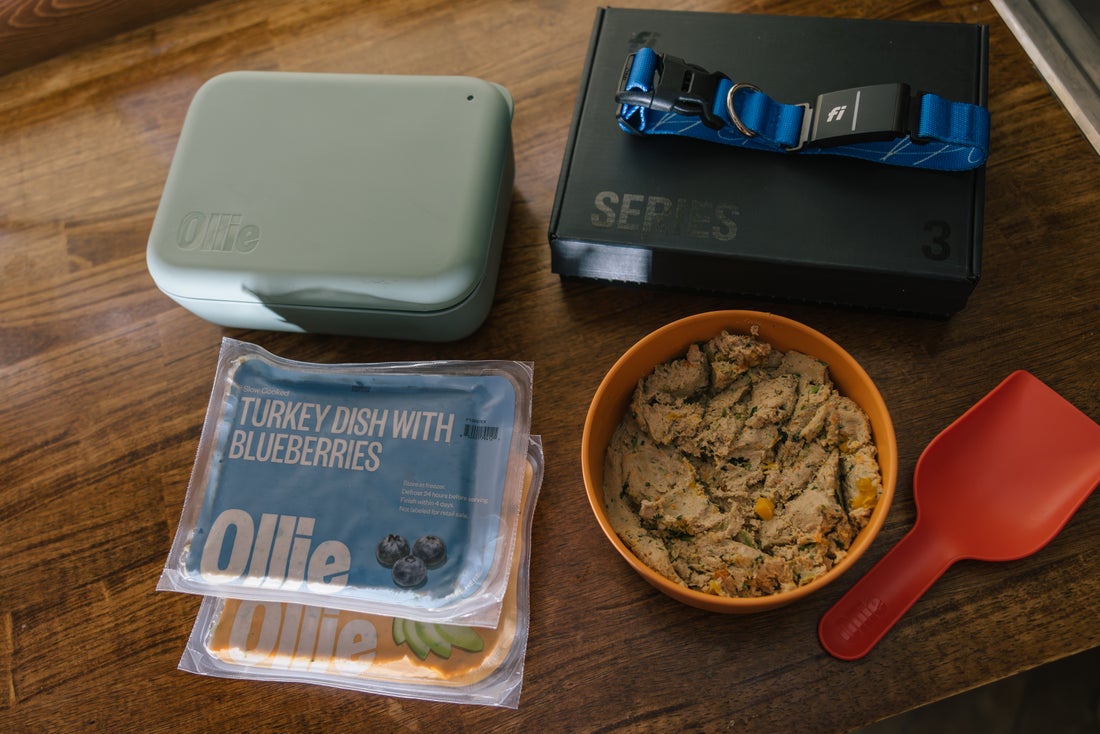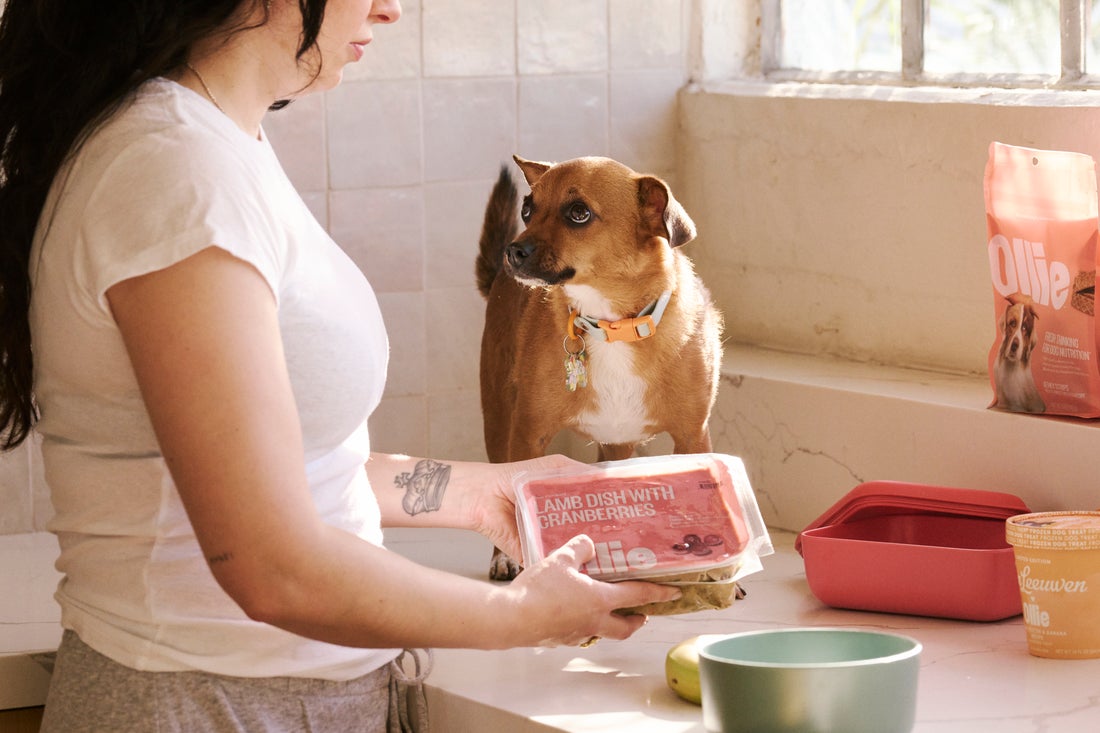Hey Ollie blog readers! We’re offering you an exclusive 60% OFF your starter box! Try now!
It’s always a little unsettling. You hear the sound of retching from the next room, rush over, and find your dog has just thrown up what looks like water or clear liquid. There’s no food in it. No weird color. Just a puddle on the floor and a very confused-looking pup.
If you’ve landed here after Googling “why is my dog throwing up water?” or “should I be worried if my dog is vomiting clear liquid?” — you’re definitely not alone. It’s one of the most searched pet health concerns, and for good reason. Vomiting in dogs can mean a lot of different things. Sometimes it’s nothing serious. Other times, it’s your dog’s way of telling you something isn’t right.
The good news is that clear or watery vomit often has a simple explanation. But there are also cases when it’s a sign that your dog needs veterinary care. This guide will help you sort out what’s normal, what’s not, and what you can do to help your dog feel better.
Quick Overview: What Does It Mean When a Dog Throws Up Clear Liquid?
When a dog vomits clear liquid, it’s usually one of two things:
- Water they just drank
- Stomach fluids, like mucus or gastric juices
The tricky part is that it looks like plain water, but it might not be. It could be saliva, digestive fluid, or even a mix of water and mucus. That’s why the context matters so much.
Some of the most common, non-serious reasons for clear vomit include:
- Drinking water too fast
- An empty stomach producing excess acid
- Mild acid reflux
- Motion sickness
- Anxiety or excitement
On the other hand, clear vomiting can also show up as an early warning sign of something more serious. If your dog is vomiting multiple times in a day, seems lethargic, or isn’t eating or drinking normally, it’s best to call your vet.
A single episode of clear vomit isn’t always cause for concern. But if it keeps happening, it’s your dog’s way of telling you that their body is out of balance and needs support.
Difference Between Vomiting and Regurgitation
Before we get into the “why,” it helps to understand what your dog is actually doing. A lot of people assume vomiting and regurgitation are the same thing, but they’re not. Knowing the difference can help you figure out what’s going on—and what to do next.
Vomiting is active.
You’ll usually see warning signs like drooling, heaving, or abdominal contractions. Your dog might seem uncomfortable or pace before it happens. What comes up could be clear liquid, foam, food, or yellow bile.
Regurgitation is passive.
It often happens quickly and without warning. There’s no heaving or struggle—it just kind of… comes out. Regurgitated material is usually undigested and may look like water or mucus, especially if it happens soon after eating or drinking.
Here’s a simple way to remember it:
- If your dog is working hard to bring it up, it’s vomiting.
- If it just sort of falls out with no effort, it’s regurgitation.
Both can involve clear liquid. But they often point to different causes. Vomiting usually means the stomach is irritated. Regurgitation is more likely related to the esophagus or how food and water are moving down the digestive tract.
Common Reasons for Dogs Throwing Up Clear Liquid
Clear vomit might seem mysterious, but there are a few common explanations that pop up again and again. Here’s what might be going on:
1. Drinking Water Too Fast
After a long walk or play session, some dogs gulp down water like it’s a race. That sudden intake can trigger a reflex response, and they end up throwing it right back up. It usually happens within minutes and doesn’t repeat.
2. Empty Stomach or Acid Buildup
If your dog’s stomach stays empty too long, stomach acid can build up and irritate the lining. That leads to vomiting clear fluid or foam, often first thing in the morning or late at night. Some dogs even vomit bile (a yellowish fluid) if this goes on too long.
3. Mild Acid Reflux
Just like in humans, dogs can experience reflux. When stomach acid moves up into the esophagus, it can trigger nausea and vomiting. The result is often clear fluid or a watery, foamy mix.
4. Food Sensitivity or Allergy
If your dog is sensitive to something in their food, their body may respond by rejecting it. This can happen shortly after meals or randomly, especially if the food is rich, processed, or contains artificial additives.
5. Motion Sickness
Car rides, new environments, or too much excitement can all lead to motion sickness. When that happens, dogs may vomit clear liquid—even if their stomach was already empty.
6. Throat Irritation or Coughing
Conditions like kennel cough, throat infections, or even something stuck in the throat can cause dogs to gag or cough up clear, foamy mucus that looks like vomit.
Each of these causes might look similar, but they come with different clues. That’s why watching when and how the vomiting happens can be just as important as the vomit itself.
When to Worry: Warning Signs That Need a Vet Visit
One isolated episode of clear vomit usually isn’t an emergency. But if your dog throws up more than once or shows any other unusual signs, it could point to something more serious.
Here are signs that it’s time to call your vet:
- Vomiting more than once in 24 hours
- Lethargy or low energy
- Loss of appetite
- Excessive drooling or lip-licking
- Pale gums or signs of dehydration
- Diarrhea in addition to vomiting
- Vomit with blood or a foul smell
- Abdominal swelling or obvious pain
Some conditions that can start with clear vomiting include:
- Gastroenteritis (inflammation of the stomach and intestines)
- Pancreatitis
- Bloat or gastric torsion
- Foreign object ingestion
- Toxicity from plants, human foods, or chemicals
It’s also important to trust your gut. If your dog just doesn’t seem like themselves, don’t wait. Clear liquid may not look dangerous, but it can be the first sign of a bigger issue.
What to Do If Your Dog Is Throwing Up Clear Liquid
If your dog has vomited clear liquid once and seems otherwise fine, you can take a wait-and-watch approach. But it helps to be prepared.
Step-by-step guide:
- Take away food for 8 to 12 hours
Give their stomach a break, especially if the vomiting happened after a meal. Do not fast puppies without asking your vet. - Offer small amounts of water
Let them sip, or offer ice cubes. Too much water at once can cause more vomiting. - Watch closely
Monitor energy, appetite, and whether they vomit again. Take note of when it happens (morning, after meals, etc.). - Reintroduce food slowly
Start with a bland meal like boiled chicken and rice in small portions. If they keep it down, gradually return to regular meals over the next day or two. - Call your vet if symptoms continue
If vomiting happens more than once or other symptoms appear, it’s time for a professional evaluation.
What not to do:
- Don’t give over-the-counter medications meant for humans
- Don’t ignore vomiting that becomes frequent or forceful
- Don’t assume it’s just “eating too fast” if it keeps happening
Catching patterns early can make all the difference. Keep a note of when your dog vomits, what they ate beforehand, and how they act afterward. That information can be super helpful for your vet if a visit is needed.

How Food Quality Affects Digestive Health
Food plays a much bigger role in your dog’s digestive system than most people realize. If your pup regularly vomits clear liquid—especially around mealtimes or after eating—it could be a reaction to what’s in their bowl.
Many commercial kibbles are loaded with fillers, artificial preservatives, and ingredients that can irritate the stomach. Even brands labeled “premium” may include by-products, low-quality meat, or grains that are hard for some dogs to digest. Over time, that irritation can lead to symptoms like vomiting, acid buildup, or inconsistent appetite.
Dogs with food sensitivities may also throw up clear liquid as a response to something they can’t tolerate. This can happen even if they’ve been eating the same food for years. Common triggers include:
- Chicken by-products
- Artificial dyes or flavors
- Corn, wheat, or soy
- High-fat content
- Low moisture levels (especially in dry food)
Clear vomiting is your dog’s way of saying, “This isn’t working for me.” And if it’s happening often, a better diet might make all the difference.
Ready to see the difference real food can make?
Start your dog’s personalized meal plan
Why Many Pet Parents Switch to Ollie for Digestive Issues
If you’re dealing with a dog who’s vomiting clear liquid regularly—and your vet has ruled out serious issues—it may be time to take a closer look at their food.
Ollie fresh dog food is made with real, whole ingredients that are easy on sensitive stomachs. We don’t use any by-products, fillers, or artificial anything. Just gently cooked meat, veggies, and vitamins in a format that’s easy to digest.
Here’s how our meals support better digestion:
- Real protein first: No mystery meat. Just real beef, chicken, turkey, or lamb as the first ingredient.
- Gentle on the gut: Each recipe is balanced by veterinary nutritionists to support healthy digestion and reduce inflammation.
- Moisture-rich: Our fresh food naturally contains more moisture than dry kibble, which helps support stomach and kidney function.
- No guesswork: Every meal is portioned based on your dog’s size, breed, and activity level. That means less risk of overeating or stomach upset.
We’ve seen thousands of pet parents tell us the same thing: “My dog used to vomit all the time. Since switching to Ollie, it’s stopped.”
Feeding your dog shouldn’t be a guessing game. With Ollie, you know exactly what’s in their bowl—and how it’s helping them feel better from the inside out.
Clear Vomit Isn’t Always a Clear Answer
When your dog throws up clear liquid, it’s easy to panic—but it’s not always a sign of something serious. The key is to look at the full picture: how often it happens, how your dog feels afterward, and whether it’s linked to food, stress, or other habits.
A one-time incident isn’t usually cause for concern. But if vomiting becomes part of your dog’s routine, it’s time to dig deeper. Start by ruling out medical causes with your vet. From there, take a close look at their diet and daily routine.
Your dog can’t tell you what’s wrong—but their body will give you clues. And with the right food and support, you can help them feel better, naturally.
Tired of mystery ingredients and upset stomachs? Let’s fix that.
Start your custom fresh meal plan with Ollie today
Real food. Real results. Backed by veterinary science and delivered to your door.
Frequently Asked Questions About Dogs Vomiting Clear Liquids
Why is my dog throwing up water but acting fine?
If it happens once and your dog seems normal otherwise, it’s often due to drinking water too fast or having an empty stomach. Keep an eye on them, but it’s usually not serious.
Should I let my dog drink water after vomiting?
Yes, but in small amounts. Too much water at once can make the vomiting worse. Offer a few sips or small ice cubes until their stomach settles.
Why does my dog throw up clear liquid in the morning?
This often points to an empty stomach or acid buildup overnight. Feeding a small snack before bedtime can sometimes help.
Can switching food help stop the vomiting?
Yes. If the vomiting is linked to food sensitivity or low-quality ingredients, switching to a fresh, simple diet like Ollie can reduce or even stop it.
How long should I wait before calling the vet?
If your dog vomits more than once in 24 hours, seems tired, refuses food, or shows other signs like diarrhea or bloating, call your vet right away.
Tagged As:

The nutrition your dog needs,
the food they want.

Enjoying our articles? Subscribe our Newsletters and get new articles directly to your inbox
You might also like
18 September 2025
4 MINS READ
Is Fresh Dog Food Easier to Digest?
Yes, fresh dog food is generally easier for dogs to digest than highly processed kibble. Because it’s made with whole ingredients, gently cooked, and free from unnecessary fillers, fresh food supp…
by Ollie Pets
18 September 2025
5 MINS READ
Can I Rotate Fresh Dog Food Flavors?
Yes, it’s safe to rotate fresh dog food flavors, and many dogs actually benefit from the variety. At Ollie, we offer multiple fresh recipes, like Beef, Chicken, Turkey, Lamb, and Pork so you can…
by Ollie Pets
18 September 2025
5 MINS READ
Is Fresh Dog Food Safe During Power Outages?
Fresh dog food is only safe during a power outage if it has stayed cold, specifically, below 40°F. Once the temperature rises above that point, bacteria can start to grow, and the food may no lon…
by Ollie Pets







